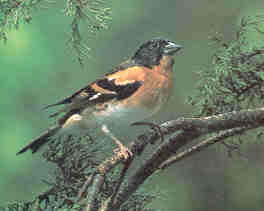
BRAMBLING CROSSES
Cock: much brighter than the hen, having a head mottled with brown on black, in breeding season the cock assumes a completely black head, mantle, wings and tail. Hen: duller brown upper parts with a buff-grey head, generally paler in colour. Bramblefinches become very territorial in the breeding season. the only cross produced at this time using the Bramblefinch cock is the Bramblefinch x Chaffinch
The eggs hatch approx. 14 days after sitting occurs, young leave the nest at 14 days old and are self supporting at 28 days
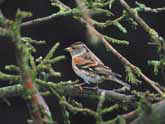
Status and distribution Breeds throughout Norway and in all but southernmost parts of Sweden and Finland, in Estonia and across northern Russia east to the Urals. An isolated population breeds in the Alps in Switzerland and northern Italy and has bred in Iceland, north-central Scotland, Netherlands, Germany and Denmark.
A migratory species with autumn passage mainly in mid Sep-Oct, sometimes Nov with most birds moving south or south-west through Europe. Widespread in winter throughout Europe south of breeding range occurring west to Iberia and south to the Mediterranean, Turkey and the Middle East. Return passage takes place Mar-mid May.
Vagrants recorded in Iceland and Faroes and has bred in both, also recorded in the Canaries, Madeira, Cyprus and North Africa, Jordan and Iraq.
Habitat Breeds in open coniferous forest, birch woodland and riverine willows and winters along woodland edges close to open farmland and especially stubble fields. In some areas large numbers gather in autumn and winter in beechwoods to feed on beechmast, also fond of hornbeam seeds
BREEDING PAGES CLICK HERE
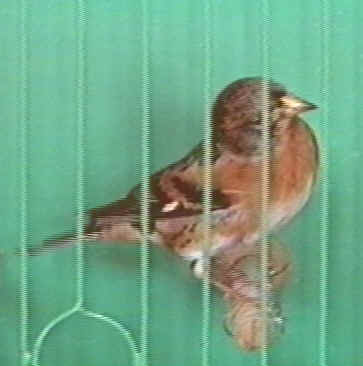
BRAMBLEFINCH COCK
at Staffordshire Show 1991 exhibited by B Clarke
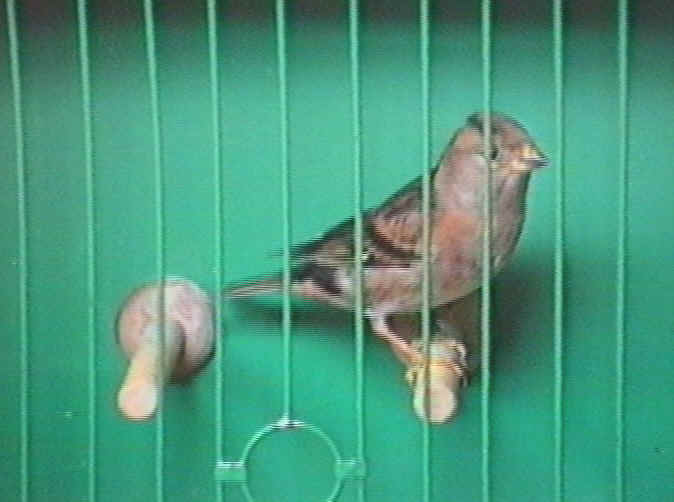
BRAMBLEFINCH HEN
at Staffordshire show 1991 exhibited by Mr & Mrs J Ball
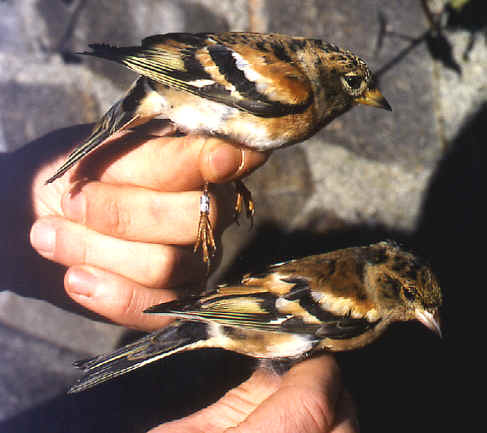
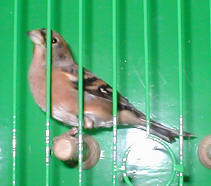
Whether bred using the Bramblefinch cock or the Chaffinch cock, the cross is almost identical and it is only the smaller amounts of white on the wing bars and the slightly smaller head of the Bramblefinch that give some clue to the male parentage, but even these distinctions are not infallible and one needs great experience to even hazard a guess let alone a definite answer as to which way round this cross was produced
top left Photo: Lubomir Vesely (Czeck Republic)
bottom photos: I took at London & home counties 2004
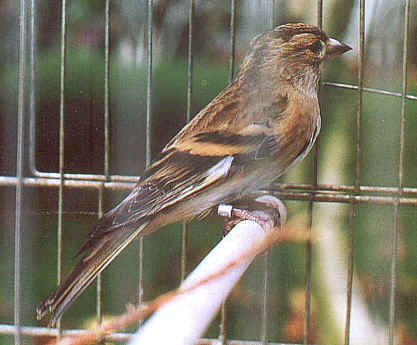
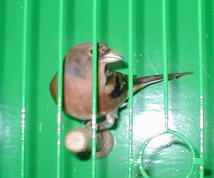
SEED: good British finch mix including a small amount of hemp, pine nuts, sunflower, groats, niger, maw, gold of pleasure and perilla, also a good multi vitamin with added probiotic.
REARING: soaked seed, egg food, a supply of green food and small amounts of live food, unlimited when rearing young, fresh water daily and mineralised grit with a small amount of charcoal added.